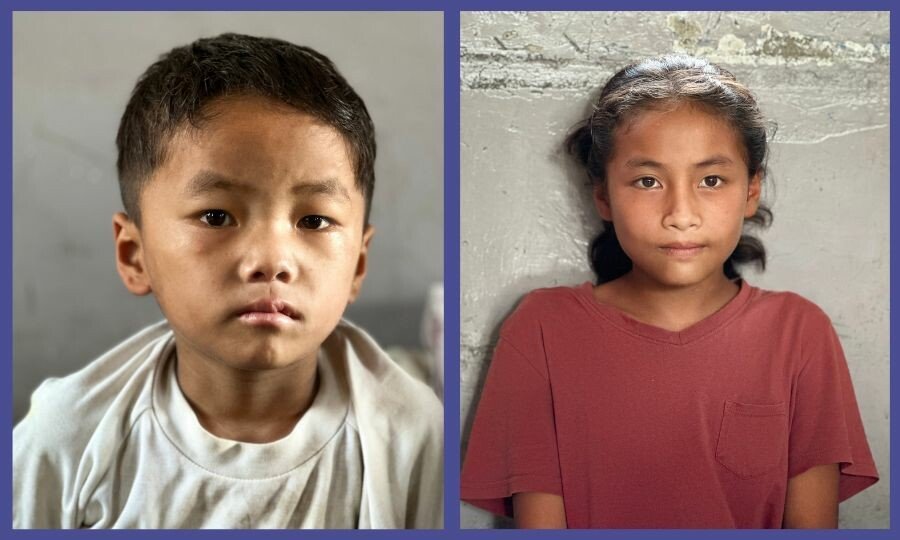Manipur: Skyrocketing Cancer, Kidney Failure Deaths Amid Displaced People
State Government Remains Unresponsive to Escalating Health Emergency
Commentary, By Vishal Arora
January 16, 2025
Two displaced Kuki-Zo children at a relief camp in Churachandpur, Manipur / Photo by Vishal Arora
More than 20 months after ethnic violence erupted in Manipur on May 3, 2023, over 31,900 displaced Kuki-Zo individuals remain in relief camps in two districts of the state. Newsreel Asia has learned that in one of the districts alone, at least 90 deaths from humanitarian causes have occurred, with cancer and kidney failure death rates far surpassing national or regional averages amid a lack of government intervention.
At least 15,832 displaced Kuki-Zo individuals are sheltered in 87 relief camps in Churachandpur district, while another 16,023 are in 49 camps in Kangpokpi district, according to the Kuki-Zo group Indigenous Tribal Leaders’ Forum (ITLF).
The figure of 90 deaths – an average of one death a week – pertains solely to Churachandpur, also known as Lamka, and comes from Kuki Khanglai Lompi (KKL), a community-led philanthropic organisation actively involved in humanitarian efforts in the region.
Newsreel Asia’s analysis of the data showed that the primary causes of death among the displaced include cancer, kidney failure, respiratory illnesses and heart-related issues. About 26% of the fatalities were due to cancer, followed by kidney failure at over 18%, respiratory diseases at over 16% and heart-related ailments at about 15%.
The remainder succumbed to a variety of causes such as drowning, liver failure, diabetes and infectious diseases including dysentery, measles, and tuberculosis, alongside mental health issues and the common cold.
Heart-related conditions claimed the lives of the youngest victims: a 4-day-old infant died from cardiopulmonary arrest and a 17-year-old from a heart attack.
Of those who have died, around 33% were elderly (over 60 years old), 24% were children (under 18 years old), and nearly 10% were young adults (ages 19 to 28).
What’s most worrying is that nationally, cancer is responsible for about 9% of all deaths, a figure that escalates to 9.5% in Northeast India. Among the Kuki-Zo displaced, however, the cancer mortality rate is nearly triple the national average. Even more concerning is that kidney failure claims six times the lives among the displaced compared to the national rate, which is 3%.
The mortality rates from respiratory and heart-related conditions are, however, lower than the national figures.
The higher mortality rates in cancer and kidney failure among the displaced populations can be attributed primarily to severe logistical and administrative challenges.
Despite its proximity to Imphal, the capital of Manipur—situated just about 60 kilometres away and connected by well-maintained roads—Churachandpur has remained isolated since the onset of the ethnic violence involving the Meitei community. The town has received little to no government aid or transportation. As a result, all necessary goods and medical supplies must be transported from Aizawl, the capital of the neighbouring state of Mizoram, located about 350 kilometres away. The challenging route from Aizawl to Churachandpur traverses hilly and often hazardous terrain. This extended supply chain not only increases the time and cost involved in delivering essential goods and medical aid but also heightens the risk of disruptions and delays.
One might question how the government is addressing the severe logistical challenges that are resulting in loss of life in Churachandpur. Surprisingly, there appears to be no governmental action or even interest in resolving these issues. Newsreel Asia has spoken to several local civil society organisations, all of which reported that the government has neither collected any data on the healthcare needs of the displaced population nor shown awareness of the rising death toll.
Community volunteers are coordinating essential services, including ambulances and medical supplies, often incurring substantial debts to hospitals and pharmacies. These debts are eventually settled with the help of individual donors and civil society groups.
The displaced people seem to have been left to fend for themselves amidst a crisis for which the state government should be held accountable, especially since law and order fall under state jurisdiction.
Massive destruction of infrastructure and the loss of over 250 lives followed the intensification of a decades-long conflict on May 3, 2023. The escalation was triggered by a controversial state high court order that suggested extending special economic benefits and quotas to the majority Meitei population, similar to those provided to the minority, tribal Kuki-Zo people. The proposal would have allowed Meiteis to purchase land in historically Kuki-Zo territories.
More than one and a half years later, the violence continues. It is imperative that the government at least addresses the disproportionate impact of cancer and kidney failure on the displaced populations with urgent and comprehensive healthcare strategies.
How about mobile medical units, equipped with essential diagnostic tools and treatments, rotating through relief centers to ensure regular access to medical care? Is that too difficult for the state government? How about establishing temporary specialist clinics staffed with oncologists and nephrologists for periodic specialised care in collaboration with NGOs and government agencies? Is that also impossible for the government? Further, shouldn’t the government be empowering local healthcare workers through targeted training initiatives? Should it not establish medical supply hubs in Aizawl?
Is the state government surprised that the Kuki-Zo community is urging for a separate administration in the form of a Union Territory?

